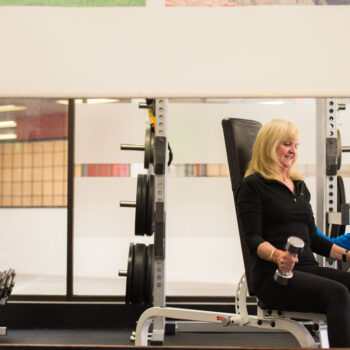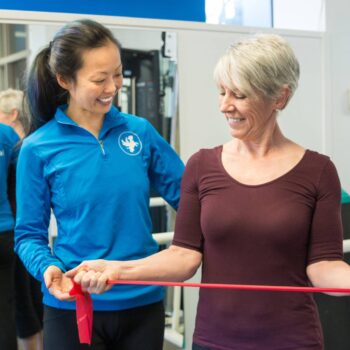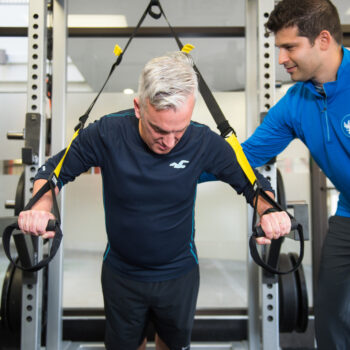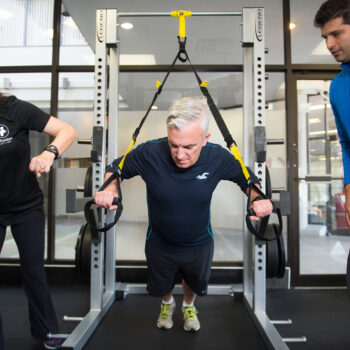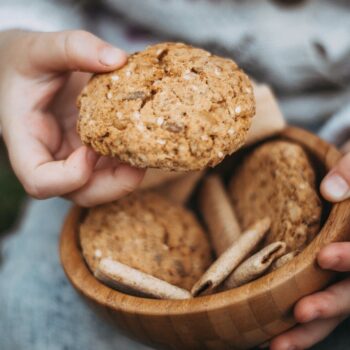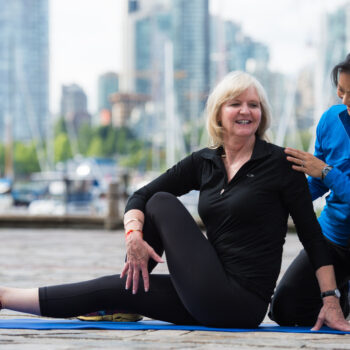3 ways you might be sabotaging your fitness and weight loss goals
Health, energy and slowing the aging process are all excellent reasons to exercise, but many clients are also hoping to lean down and shed some extra fluff. While some clients work out consistently and see improvements in strength, sometimes they just aren’t losing weight. The root of this is often in how we’re eating, so let’s talk about 3 ways your food might be interfering with your weight goals.
By Michelle Sheppard
1. You’ve added a pre-workout or post-workout shake or meal

If you listen to the chatter from “the experts,” or your super fit best friend, it can feel like you’re missing out if you haven’t added a fancy pre-workout drink and a post workout recovery snack. The truth is that most of the supplements in this category are ineffective and overhyped, and the ones that are effective aren’t designed to help you lose weight.
Many contain simple carbs, which drive blood sugar up. This is good for quickly building muscle AND great for keeping fat stores exactly where they are. They also add extra calories when you are aiming for a small deficit each day.
If you aren’t “hitting the wall” during a workout, it’s best to skip these pre- and post- workout snacks if your goal is slimming down. For post workout food, you should only need a snack if you are physically hungry, and even then, keep it light. Address the hunger but don’t burst your energy bank. Find out more about when and what to eat pre and post workout here.
2. Your hunger is waaaay up

Grumbling tummy in the hours after your training session got you grazing before and after meals? You’re not alone.
Most of us experience a significant increase in the levels of appetite hormones with intense activity. This is a tough one, because you don’t want to get in the habit of ignoring hunger and fullness cues as they are your body’s way of regulating energy balance. But if you are trying to lose weight, you don’t want to be eating back all the energy you just burned off as well.
If you find your hunger is driving you crazy, focus on filling half your plate with non-starchy veggies at every meal and snack. The fibre and volume will help your tummy signal to your brain that you’re full. Pair it with a lean protein (chicken, eggs or chickpeas) and a little bit of fat (a drizzle of olive oil or a couple tablespoons of seeds). Both protein and fats also help switch on fullness signals, even in relatively small amounts.
Finally, make sure you are drinking lots of additional water on training days even if you don’t sweat a lot. We often confuse thirst cues, which get less and less accurate the older we get, with hunger cues and end up munching when our bodies are craving fluid. Pre-empt this to help regulate your increased appetite.
3. You’re eating more starchy foods than you’re “earning”

As we get in to our thirties and onwards, our bodies become more sensitive to both the amount of carbohydrates we eat in a sitting, and the quality/rate of absorption. Often when clients start to make healthier choices, extra starchy foods sneak their way in. This rise in available fuel means your body is less likely to use stored fats for energy, and the spike in blood sugar with a larger portion (even if it’s a healthy source) may actually increase storage of energy as fats. Neither is helpful if you’re trying to trim down.
Starchy foods include grains like rice, quinoa, wraps, wheat products (pasta, bread etc), as well as the starchier vegetables – carrots, peas, potatoes, corn, yams and the like. While these are all healthy and nutrient dense, they still impact our blood sugar and can’t be eaten mindlessly. For women I usually suggest trying ½ to ¾ cup of grains or starchy veggies at each meal, men usually about ¾ cup to 1 cup. The more active you are, the more you can press towards the top of the range. We usually fill up half our plates with these foods, when they shouldn’t take up more than ¼ for the average active person. Most clients are so surprised at how different this is from our usual plate!
A note on balance here, don’t be tempted to skip the starchy food in an effort to lose weight more quickly. Most clients find that over time their energy lags and appetite goes up. Research also shows that very low carb diets actually increase levels of inflammatory markers over time (an important piece of heart disease, obesity and diabetes risk). Carbs aren’t evil, they are still an important energy source – we just need to eat them in a way that reflects our goals, age, size and lifestyle.
How has food and nutrition impacted your performance ? Share your comments or questions on the Le Physique facebook page. We’d love to hear from you!
About the author
 Michelle Shepherd is a Registered Dietitian and owner of Westcoast Nutrition. She is registered with the College of Dietitians of BC. She completed a Bachelor of Science in Food Nutrition and Health at the University of British Columbia, followed by an accredited internship with Vancouver Coastal Health. Michelle works both as a clinical and private practice dietitian, teaching clients how to leverage food and nutrition to meet their health goals.
Michelle Shepherd is a Registered Dietitian and owner of Westcoast Nutrition. She is registered with the College of Dietitians of BC. She completed a Bachelor of Science in Food Nutrition and Health at the University of British Columbia, followed by an accredited internship with Vancouver Coastal Health. Michelle works both as a clinical and private practice dietitian, teaching clients how to leverage food and nutrition to meet their health goals.


